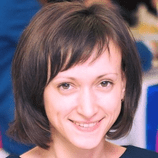
Working with a wide variety of companies – from small businesses to large corporations – we often find that companies are still hesitant to implement an LMS. Mistakenly believing that this process is too complicated.
It’s time to dispel these doubts once and for all!
Implementing an LMS is not a maze of obstacles. With the right approach and a clear plan, it becomes an exciting journey to new opportunities for the company and its employees.
In this article, we have prepared a checklist for you that covers the key aspects of LMS implementation: from organizational issues to technical details and legal nuances.
LMS implementation checklist
Implementing a learning management system (LMS) is a complex process that requires careful planning. For convenience, we have divided the checklist into three main aspects: technical, organizational, and legal. It’s important to understand that these processes don’t have to happen sequentially. They can be performed in parallel, and their timeline can be adapted to the specifics of your company.
 1. Organizational aspects of LMS implementation
1. Organizational aspects of LMS implementation
The organizational component is key, as it determines the structure of the LMS implementation and the team’s preparation for its use.
Planning the implementation process
Clearly state what you want to achieve with the LMS implementation. This could be:
– improving the effectiveness of training,
– reducing learning costs,
– improving employee engagement.
Form a team that will be responsible for implementation. This team should include representatives from different departments: HR, training and development, IT, and key stakeholders.
Develop a step-by-step plan, which should include: implementation stages, timelines, and resources. Assign a responsible person for each stage and task. This will help avoid confusion and ensure effective project work.
Portal branding
Branding isn’t just about cosmetic tweaks, it’s about creating a unique and engaging learning space that reflects the company’s values and culture. When employees see familiar colors, logos, and style, they realize that this platform is part of their work ecosystem. A well-designed portal increases engagement and encourages active use of the LMS.
Let’s take a look at what exactly needs to be done for effective portal branding:
- Customize the login page.
This page is the business card of your LMS. Make it bright and colorful. Place your company logo and use corporate colors. We also recommend adding an inspiring welcome message that reflects the company’s values and motivates learners to learn.
- Design of the main page.
Design of the main page. Turn your home page into a center of communication with employees. In addition to the standard elements, add a news and announcements section. This will allow you to share important events in the company’s life, announce new courses and activities.
- Setting up widgets.
Customize widgets so that they not only display important information but also serve as quick links to key resources. Create link buttons to the corporate wiki, organizational structure, knowledge base, etc. This will make it easier for users to navigate and make interacting with the system more engaging.
- Adaptation of message templates.
Customize email and system notification templates to match your branding. This will create a coherent experience of interacting with the system.
- Creating unique design elements.
If you have a corporate mascot, make it part of the learning portal. This will not only increase interest in learning, but also create an emotional connection with the platform. If you don’t have a mascot, consider creating one specifically for your LMS to help unite employees and increase their interest in learning.
And here is an example of the design of portals of companies that cooperate with LMS Collaborator and have already successfully launched their learning portal. Each of these portals not only reflects the company’s unique style and values, but also creates an engaging learning environment:

Filling the portal with content
Start by downloading and creating learning resources. These can be e-courses, video lectures, presentations, documents, infographics – anything that can be useful for training and development of your employees. It is important not just to transfer existing materials, but to adapt them to the online format, make them interactive and visually appealing. We recommend supplementing the materials with multimedia elements, interactive tasks, and built-in tests that will keep employees’ attention and help them better absorb the information.
Adding gamification elements will help motivate employees to complete training. Develop a system of badges for various achievements and create branded certificates that employees can receive upon successful completion of important training programs.
Don’t forget about filling the Knowledge Base and creating a course catalog. Collect best practices, useful materials, instructions, FAQs, success stories, etc. in the Knowledge Base. Structure it so that users can easily find the information they need: use tags, categories, and filters for easy navigation.

An example of filling the OKKO learning portal
Team training
Effective training of the team that will work directly with the LMS is an integral part of the successful implementation of the system.
Start with a team briefing. Explain the main functions of the system, demonstrate its capabilities, and show how it can make work easier and improve the learning process. Create a set of training materials available for self-study. This can include detailed instructions, answers to frequently asked questions (FAQs), and short video tutorials that clearly demonstrate various aspects of working with the system.
We recommend paying special attention to training system administrators. For them, you can create a separate set of training materials or videos that cover specific functions in detail: how to create new courses, how to track employee learning progress, how to set up a reward system through badges and certificates, etc.
For example, LMS Collaborator has a separate section on YouTube with short tips on how to use the system. These video tips can be an additional resource for training both administrators and users. The videos are designed to help you quickly and efficiently familiarize yourself with the system’s functionality.

 2. Technical aspects of LMS implementation
2. Technical aspects of LMS implementation
Selecting infrastructure requirements
First of all, you need to determine your infrastructure requirements. You need to decide whether you will use your own server or prefer a cloud-based solution (SaaS). Each option has its advantages and disadvantages:
Option 1: Own server.
Using your own server gives you full control over your data and infrastructure. This is critical for companies that work with sensitive information or have specific data security requirements. However, this option requires a significant initial investment in hardware, software, and qualified personnel to maintain the infrastructure. You also need to take into account the costs of ongoing system upgrades and scaling.
Option 2: Cloud solution (SaaS)
A cloud-based solution (SaaS), on the other hand, offers flexibility, rapid deployment, and minimal upfront costs. It allows the organization to focus on the learning process without being distracted by the technical aspects of maintaining the infrastructure. Cloud solutions usually offer high availability, automatic updates, and scalability. However, when choosing a SaaS solution, the organization partially loses control over the data and becomes dependent on the service provider.
Both approaches have their advantages and disadvantages, so in the end, it all depends on your needs. However, when it is a SaaS solution, we, as a provider, are fully responsible for it. It’s easier for us to constantly monitor and update the system so that all vulnerabilities are closed and potential security issues are identified through the same tests and audits. And the main thing here is that you don’t have to worry about it at all.
Oleksandr Slubskyi, CTO & Co-Founder, LMS Collaborator
Setting up integrations with corporate systems
Another technical aspect is setting up integrations with corporate systems. An LMS should not exist in a vacuum; it is part of the company’s digital ecosystem.
First of all, conduct an audit of existing corporate systems and identify key points of interaction with the LMS. These can be webinar systems, corporate messengers, CRM, HRM, and other platforms specific to your company.
The next step is to develop an integration strategy that takes into account the technical capabilities of each system and the company’s business needs. It is important to determine what data will be transferred between the systems, with what frequency, and in what format. For example, integration with an HRM system can ensure that user profiles in the LMS are automatically updated when their positions or departments change.
Testing and verification of the system.
Before launching the LMS across the company, conduct a small focus group test. Involve employees with different levels of technical expertise in the testing group to assess how intuitive the system is. We also recommend that you invite potential administrators and content developers to evaluate the functionality of the LMS.
The testing process should be structured and cover all key aspects of the LMS. Ask the focus group participants to perform a number of typical tasks that reflect real-life scenarios of using the system: registration, navigation through the course catalog, completion of training tasks, interaction with other users through built-in communication tools, testing integrations, etc.
This will help to identify possible problems and shortcomings that can be corrected before large-scale implementation.
Read more about how to effectively test an LMS here: LMS test drive: 8 necessary steps for successful implementation
3. Legal aspects of LMS implementation
Compliance with data protection requirements
When choosing an LMS, it’s important to make sure that the system meets international security standards. Ask the LMS provider if it is ISO 27001 certified.
ISO 27001 is an international standard that defines the requirements for an information security management system (ISMS). Certification is carried out by accredited audit bodies, which provides an additional level of reliability. The certificate indicates not only compliance with high security standards, but also its regular monitoring and improvement. This ensures that your data and that of your employees are reliably protected from unauthorized access, leaks, and other cybersecurity threats.
Conclusion of contracts
The contracting process is a key stage in the legalization of LMS implementation. The process usually looks like this:
1. The LMS provider provides a standard contract that includes a license agreement, terms of use, rights and obligations of the parties.
2. Your company’s legal department carefully reviews the agreement, paying particular attention to the intellectual property provisions, limitations of liability, and termination conditions. It also checks whether the document complies with the requirements of data protection and confidentiality laws.
3. If necessary, your lawyers will propose amendments and additions to the agreement.
4. After reaching agreement on all points, the final version of the contract is formed.
5. Additionally, a separate document with the terms of use for end users can be created, which regulates the rules for working with the system.
Remember that careful drafting of the contract is the key to successful and hassle-free cooperation with the LMS provider in the future.
Conclusion
Implementing an LMS is a truly complex process that requires attention to detail and the involvement of various specialists. However, this task is quite feasible if approached in a structured and consistent manner.
Remember that successful LMS implementation is not the end goal, but the beginning of a new stage in your company’s development. This is a stage that offers ample opportunities for continuous improvement of learning processes, staff development, and, as a result, the growth of the company’s efficiency.



































